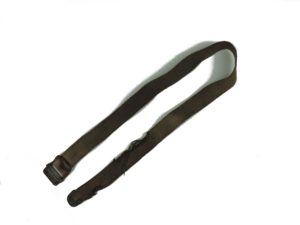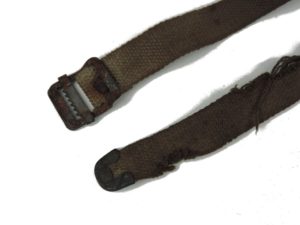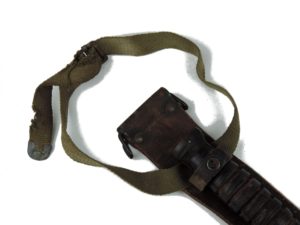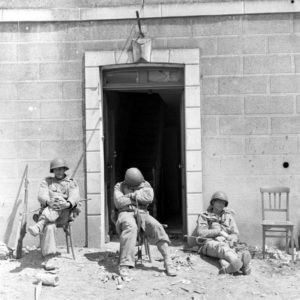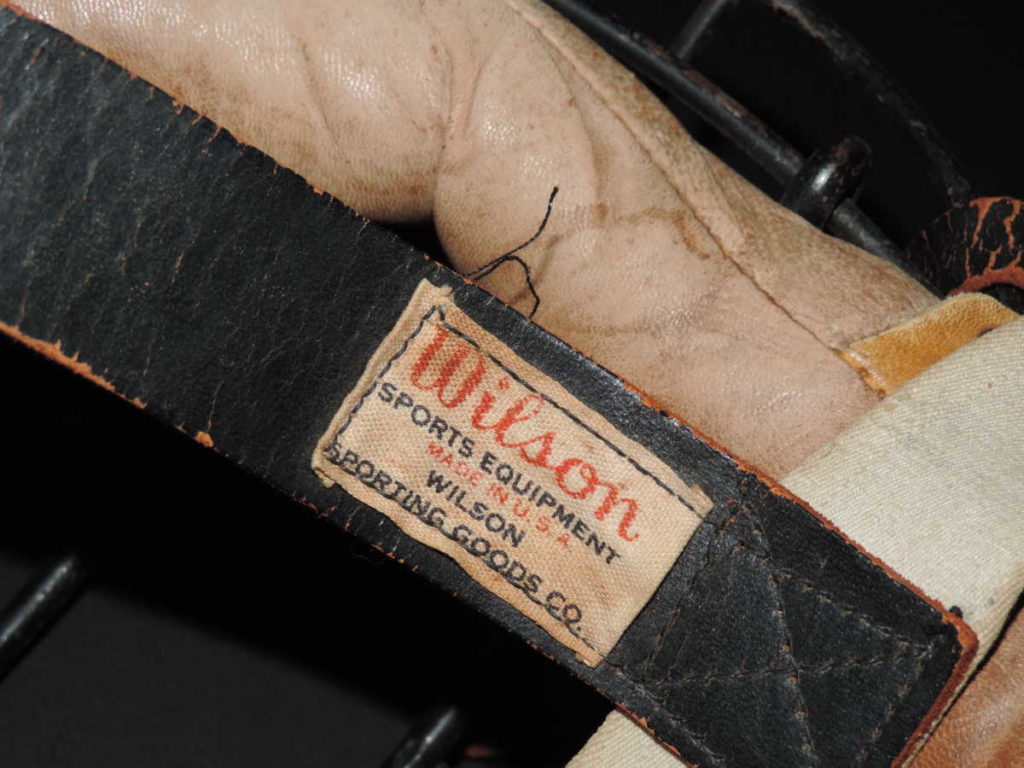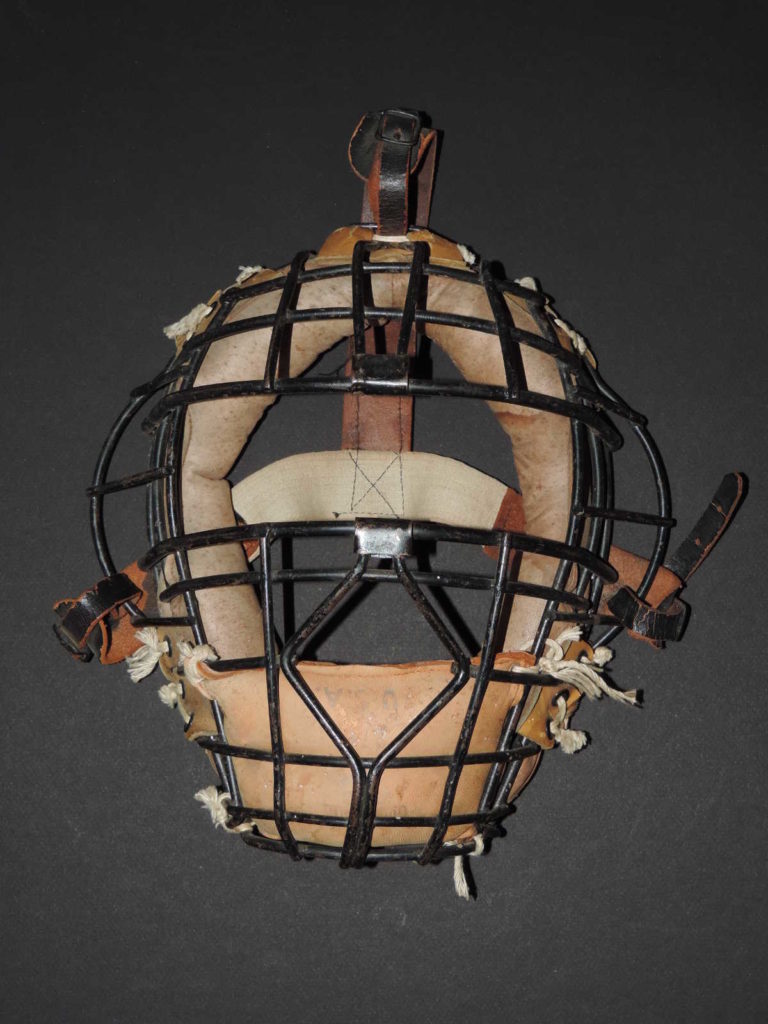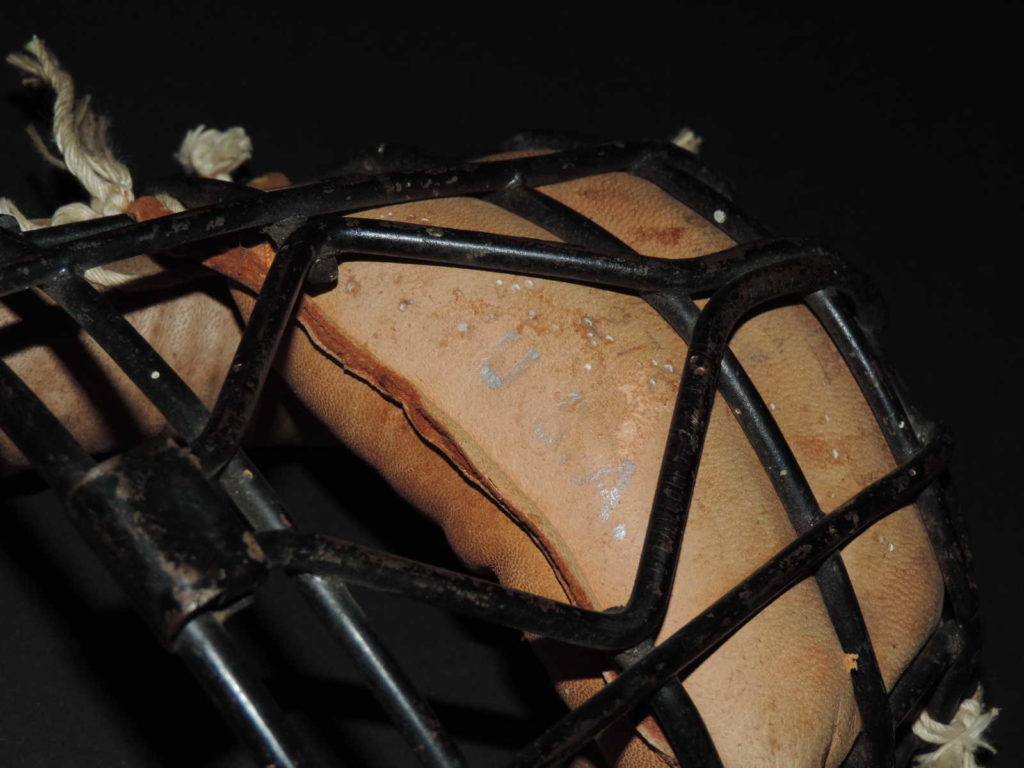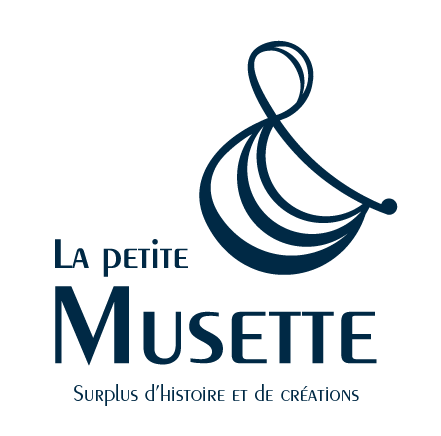by Bertrand Froger | 12 Mar 2018 | Anecdotes, Historical events
Origins
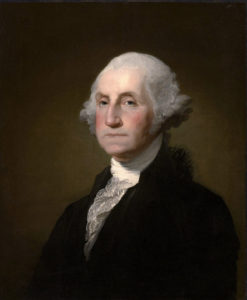
To understand this vulgar term that could literally be translated as “Labels for Dog”, we must go back to the 18th century. The United States of America faces a real problem of stray dogs in the cities and the countryside, causing a lot of damage but also many attacks on the population. Thus, George Washington decides to launch a vast operation of canine cleaning on the territory and proclaims a law obliging any canine owner to make carry to his animal a collar with the name and the coordinates of its owner.
Civil wars
Throughout the history of the United States, soldiers of more or less important and more or less official armies die and are buried on the battlefield. Before being soldiers, these characters are men, fathers, husbands, brothers. However, once the tragedy occurred during an attack, there is nothing to identify them, and all these soldiers are buried in mass graves, anonymously, in the middle of a field or a wood hundreds of kilometers away. from their house. During the Civil War (1861-1865), men only want to remain anonymous and improvise different systems to recognize their body. Some cling a paper tag with their name on the bag or
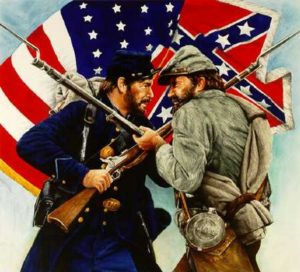
on the jacket with a pin; while others strike their initials on a coin they come wearing as a pendant. Some traders behind the lines are already at this time the seam to make custom pendants more or less luxurious for soldiers going to war. We are witnessing incredible initiatives. For example, General George Meade who, just before the Battle of Mine Run in Northern Virginia (1863), orders all his men to write their names on a white label and pin him on them before going into battle .
Dog Tag was born
After the carnage of this war, the Americans continue the protest movement and want to gather on the grave of their dead, Congress and the army are forced to seek a solution. Thus, in 1906, inspired by medallions previously marketed, a “plate of identity” project was born. It is sponsored by Chaplain Charles Pierce in charge of the Quartermaster Office of Identification. Adopted in 1913 on the eve of the First World War, American soldiers are required to wear a small aluminum disc around which a variety of information (surname, first name, unit, USA) is inscribed. Like soldiers who would wear a necklace, the soldiers call this plaque naturally “Dog Tag”. The legend had just been born.
by Bertrand Froger | 3 Mar 2018 | Anecdotes, Collections
A strap for paratrooper?
It is clear that in recent times many of these straps are sold with a name such as “portage strap 1st type for paratrooper”, it is necessary to restore certain truths. This white or green strap measures exactly 58 centimeters, with a loop at one end and an iron at the other. This type of strap is easily found on the foldable beds of the US Army and keep the folded bed during transport. Although some people no longer hesitate to rewrite the original nomenclature of the US equipment for their benefit, this strap is therefore in no way a paratrooper strap at the base.
Still used by paratroopers
However, it is not uncommon to see paratroopers ready to embark for Normandy on the British aerodromes that actually carry this kind of straps, as well as many other models of recovery straps. These straps, one like the other, allow them to fix certain equipment, including ankles, such as Hawkins mines, US M3 daggers in their sheath, etc … This anecdotal use does not justify the name of any “parachute strap”. It is only, as in many other cases, rare objects diverted from their original use by US Army soldiers in the theater of operations.
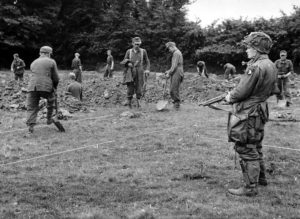
by Bertrand Froger | 24 Oct 2017 | Anecdotes, Historical events, Places
A new port and already destroyed.
From June 19, 1944 and for several days, the beach of Omaha invested by the Allies a few days earlier will be swept by a heavy storm mixed with strong tidal coefficients. The record is heavy: the artificial port “Mulberry A” is now out of use while the progress of the front continues. It is then necessary to unload and then destroy damaged ships on the beach in order to free access to the next landings of men, equipment and vehicles.
-
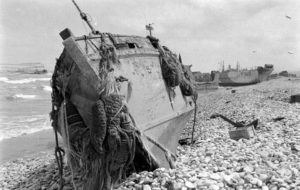
-
Omaha, après la tempête du 19 au 21 juin 1944, des épaves échouées sur les galets dont le MK4 britannique LCT-969
Voir le reportage sur les épaves à Omaha après la tempête:
https://www.flickr.com/search/?sort=date-taken-desc&safe_search=1&tags=epaveomaha&user_id=58897785%40N00&view_all=1
Pour aller plus loin:
http://omahabeach.vierville.free.fr/WebMulberry/85132-EpavesTempete.html
-
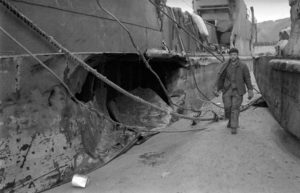
-
A Omaha, après la tempête du 19 au 21 juin 1944, un marin de l’US Navy marche entre des épaves échouées, à gauche un LCT (6)
le même marin et certainement le même LCT en LC001673 et LC001678:
https://www.flickr.com/photos/mlq/33492374435/in/photolist-T2Bb4D
Voir le reportage sur les épaves à Omaha après la tempête:
https://www.flickr.com/search/?sort=date-taken-desc&safe_search=1&tags=epaveomaha&user_id=58897785%40N00&view_all=1
Pour aller plus loin:
http://omahabeach.vierville.free.fr/WebMulberry/85132-EpavesTempete.html
-
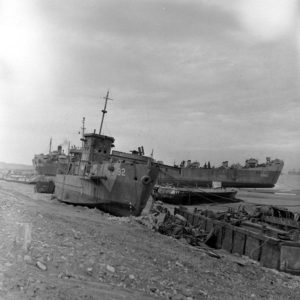
-
Vierville sur Mer, à la limite Dog White et Dog Red, sur un talus de galets, les épaves du LCI(L)-92 échoué depuis le 6 juin et celle du LST-543 échoué depuis la tempête du 19 au 21 juin.
LCI-92 pour aller plus loin:
http://omahabeach.vierville.free.fr/2622-LCI92.html
LST-543 pour aller plus loin:
reportage sur le LST-543 avant son échouage:
https://www.flickr.com/photos/mlq/8096446665/in/photostream
LST-543 échoué:
https://www.flickr.com/search/?sort=date-taken-desc&safe_search=1&tags=lst543&user_id=58897785%40N00&view_all=1
Voir le reportage sur les épaves à Omaha après la tempête:
https://www.flickr.com/search/?sort=date-taken-desc&safe_search=1&tags=epaveomaha&user_id=58897785%40N00&view_all=1
The importance of other ports.
Although troops and equipment will still be brought to Omaha in small quantities, it is the artificial ports installed on the other beaches of the Allied Landing will engulf this profusion of supplies. Thus, Mullberry ports such as Gold-Arromanches or Gooseberry of Utah-Sainte Marie du Mont, will play a key role in the supply of the front and the advance of the latter. For the example of Utah, it is not less than 836 000 men who will tread the sand of this small beach during the year 1944 because although the port of Cherbourg is released at the end of June, this one is unusable.
-
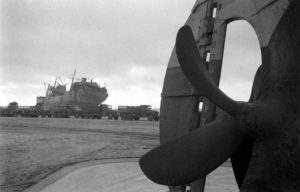
-
A Omaha, après la tempête du 19 au 21 juin 1944, un cargo échoué, en cours de déchargement à l’aide d’un convoi de GMC.
au premier plan l’hélice d’un second cargo également échoué
voir le reportage sur deux cargos échoués:
https://www.flickr.com/search/?sort=date-taken-desc&safe_search=1&tags=gmcomaha&user_id=58897785%40N00&view_all=1
Voir le reportage sur les épaves à Omaha après la tempête:
https://www.flickr.com/search/?sort=date-taken-desc&safe_search=1&tags=epaveomaha&user_id=58897785%40N00&view_all=1
Pour aller plus loin:
http://omahabeach.vierville.free.fr/WebMulberry/85132-EpavesTempete.html
-
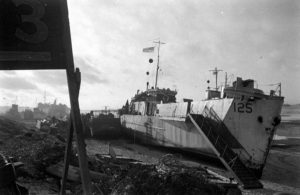
-
A Omaha, après la tempête du 19 au 21 juin 1944, plusieurs épaves dont le LCI(L)-125
http://www.navsource.org/archives/10/15/150125.htm
Voir le reportage sur les épaves à Omaha après la tempête:
https://www.flickr.com/search/?sort=date-taken-desc&safe_search=1&tags=epaveomaha&user_id=58897785%40N00&view_all=1
Pour aller plus loin:
http://omahabeach.vierville.free.fr/WebMulberry/85132-EpavesTempete.html
-
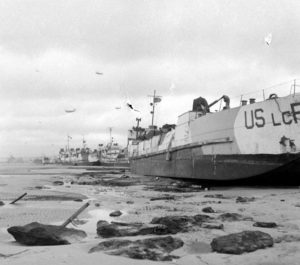
-
A Omaha, après la tempête du 19 au 21 juin 1944, plusieurs épaves échouées dont un Landing Craft (Flak) LCF échoué.
Voir le reportage sur les épaves à Omaha après la tempête:
https://www.flickr.com/search/?sort=date-taken-desc&safe_search=1&tags=epaveomaha&user_id=58897785%40N00&view_all=1
Pour aller plus loin:
http://omahabeach.vierville.free.fr/WebMulberry/85132-EpavesTempete.html
(Credits : NARA)
by Bertrand Froger | 22 Jun 2017 | Anecdotes, Places, To be visited
The streets of Carentan, witnesses of another time.
These three elements of the 327th Glider Regiment allow a moment of rest during the occupation of the city of Carentan following the liberation of the town. Landed on Utah Beach mainly on June 7th, 1944, this unit was originally intended to invade the land by gliders. It is an integral part of the 101st Airborne Division, which does not only include paratroopers. Men wear similar equipment, such as the famous US M1 rifle in its foldable butt version.
The Liberty Road, place where a lot of photos were taken.
But these elements of the 327th GIR were resting against the gable of a house are not alone and if you turn in the street, other soldiers also poke a nap. The third photo identifies this zoom. The Désiré Ingouf Café no longer exists and a new building, more or less similar has pushed in its place. However, the windows leave no doubt about the location of this snapshot. In addition, the color circles will allow you to locate yourself.
by Bertrand Froger | 20 Apr 2017 | Anecdotes, Historical events, People
A cosmopolitan and multicultural family
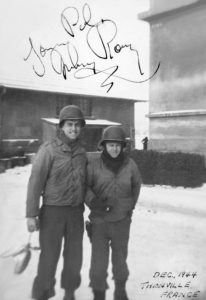 Albert Justin Ricciuti was born in 1923 on Lakewood Avenue in the east of Baltimore, Maryland. His father Raffaele, an Italian immigrant who had arrived in the United States at the beginning of the 20th century, had spent many years before understanding English. He had then joined the allied expeditionary forces and returned to Europe in 1917 to fight the German Empire. He had met Louise Pillier, a young French girl, who became his wife and joined him in his adopted country after the war. Following this international union, their son Albert grew up in Baltimore for years and then graduated from the Mont St. Joseph High School in Irvington in 1941. Thanks to his parents’ origins, the young man speaks several languages and it is his level of French which will interest the army during the Second World War.
Albert Justin Ricciuti was born in 1923 on Lakewood Avenue in the east of Baltimore, Maryland. His father Raffaele, an Italian immigrant who had arrived in the United States at the beginning of the 20th century, had spent many years before understanding English. He had then joined the allied expeditionary forces and returned to Europe in 1917 to fight the German Empire. He had met Louise Pillier, a young French girl, who became his wife and joined him in his adopted country after the war. Following this international union, their son Albert grew up in Baltimore for years and then graduated from the Mont St. Joseph High School in Irvington in 1941. Thanks to his parents’ origins, the young man speaks several languages and it is his level of French which will interest the army during the Second World War.
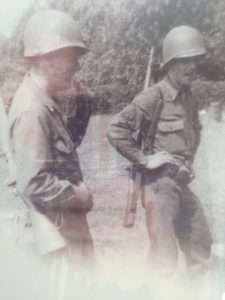
Albert also enlisted the army on January 22nd, 1943, and obtained the serial number 33552009. He then joined the 20th Corps of the 3rd Army of General Patton. Transferring quickly to Great Britain, he landed on Utah Beach on June 10th, 1944, 4 days after the start of operations in Normandy. Then its unit moved according to the progress of the operations, crossing the liberated regions of France one after the other, including Champagne. It was in Champagne that the young soldier, then twenty years old, met Paulette Révolte and his two sisters at Avenay-Val-d’Or. Through the practice of French, Albert and his comrades have more facility to communicate with French people. Beer lover, he discovers during his stay a new drink: Champagne, through good times spent with Paulette, who grew up in the vineyards. Then the front progressed and Albert finished the war and returned to the country while others did not have that chance. He then occupied a small barman job at Chiapparelli’s in Little Italy. However, once back, he has not forgotten the beautiful Paulette to whom he writes a greeting card every year during the Christmas period.
From trenches to vines
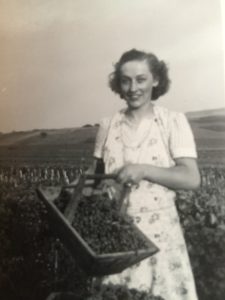 In 1962, Albert Ricciuti decided to return to Europe, 18 years after the end of the war to trace his course in the battle. This is the opportunity to visit his old friend Paulette and warn him that he will be visiting France and that he would like to see her again. The answer will not be delayed, Paulette will exclaim:
In 1962, Albert Ricciuti decided to return to Europe, 18 years after the end of the war to trace his course in the battle. This is the opportunity to visit his old friend Paulette and warn him that he will be visiting France and that he would like to see her again. The answer will not be delayed, Paulette will exclaim:
« I have so many new bottles of champagne to taste».
The lovers will marry a year later, eager to catch up all these years passed far from each other. Some formalities in the USA will be settled and Albert will move to France, in the village of Paulette. He was trained in wine and grape growing in the company of the Paulette family. In spite of himself, Albert Justin Ricciuti of Baltimore had just become the first American to produce Champagne. Wanting to learn constantly, Albert became a leader of the sector and the Ricciuti-Revolte Champagne was produced at no less than 50,000 bottles per year.
Multi-generational production
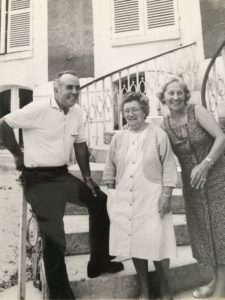
Albert Ricciuti, Hero of the Libertation of our country, passed away on June 17th, 2002 and Paulette unfortunately joined him on December 12nd, 2016. However, John Charles was born of this love in 1963, with an American father and a French mother. This son bears the names of two Franco-American symbols; John F. Kennedy, president with the tragic destiny, and Charles de Gaulle, leader of Free France during the war then president of France; and now thanks to his work the family business continues, the inheritance of a meeting and a unique know-how. Today he is proud to transmit his History and that of his name. It would appear that his son Ugo, who has just completed a BTS winegrower is already ready to take over and continue the tradition!
by Bertrand Froger | 21 Jan 2017 | Anecdotes, Discoveries
When soldiers were playing Baseball
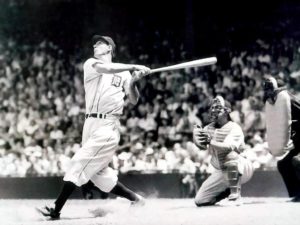 Found recently on an old camp occupied by the American soldiers in Cotentin, this relic plunges us through the moments of relaxation and laughter among the troops invading Normandy in 1944. This piece of scrap that spent more than 70 years under the ground is actually the carcass of a catcher’s mask, one of the key positions during a baseball game. This type of sport is very popular in the 1940s in the US and the soldier of the US ARMY brings with him in France more than a simple character: a real culture.
Found recently on an old camp occupied by the American soldiers in Cotentin, this relic plunges us through the moments of relaxation and laughter among the troops invading Normandy in 1944. This piece of scrap that spent more than 70 years under the ground is actually the carcass of a catcher’s mask, one of the key positions during a baseball game. This type of sport is very popular in the 1940s in the US and the soldier of the US ARMY brings with him in France more than a simple character: a real culture.
Catcher’s mask by the Jimmie Wilson’s brand
After some research and comparisons between the different models used during that period, we manage to identify this discovery by awarding it a brand: Wilson, which still exists today and provides sports equipment in particular. We managed to find another original model which was better preserved. The iron cage is painted black and on it are stringed a leather pudding embracing the face and a cushion marked “U.S.A.” on the chin. Two straps of leather and elastic canvas come to hold the whole on the head of the player. On one of them is affixed a label of the manufacturer and we know, after the discovery of photographs, that a second label with the mention “US ARMY SPECIAL SERVICES” could be stitched there. It is therefore one of many elements which breaks the codes of the traditional khaki and which offers to the soldier pleasure and distraction.
Page 1 sur 11





